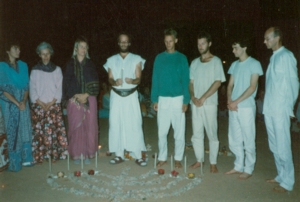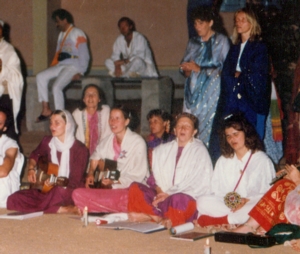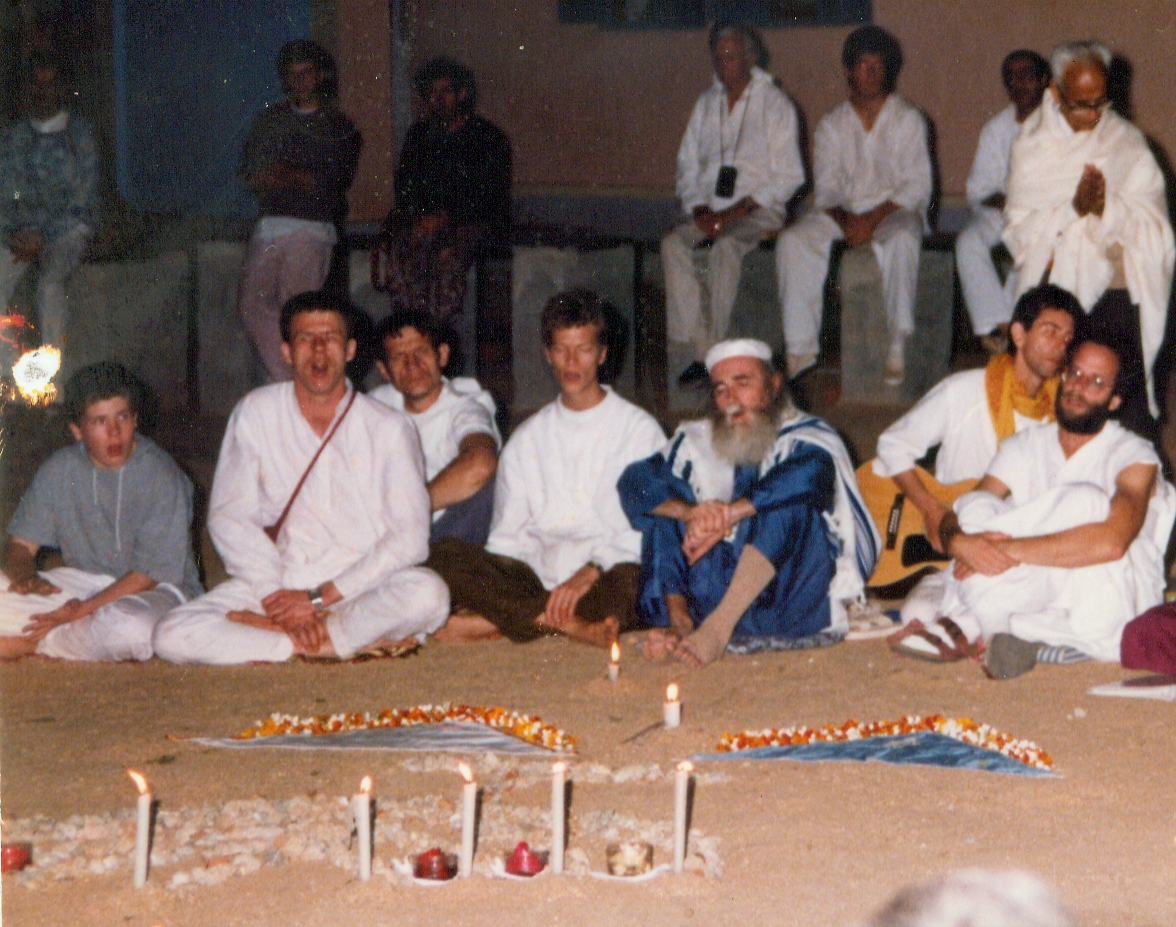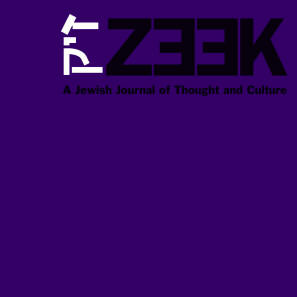 November 07
November 07
The Sanctuary of Melody
Eliezer Sobel
Elie Wiesel once said of Hasidic singing that it will "drive your soul out of yourself in order that it may rejoin its Source and become one with it in the heichel hanegina, the sanctuary of melody." As a musician, and especially as one who plays music in spiritual and other personal growth contexts, the "sanctuary of melody" has always intrigued me. What is the secret promise waiting for us in this hidden realm of music, the sacred sphere of sound? Is there a mystical message of melody that can transport the soul to places in consciousness that can never be approached through mere words? Which never-before-heard combination of intervals and tones will unlock the inner doors to the Divine realms simply when sounded by one’s own voice or another’s?
In certain Native American tribes, it is the custom for a pregnant woman to regularly sing a song of comfort to her unborn child, repeating it when the baby comes into the world, and again throughout the child’s early life. The melody becomes virtually embedded in the child’s DNA, such that in later years the very hearing of it (or singing of it to oneself) becomes an instant, reliable source of comfort, like a hard-wired lullaby. What if, I’ve always wondered, God Herself whispered such a song to us before the before, when we were merely a glimmer in the Ein Sof’s I? Like the proverbial pilgrimage to sacred sites in search of mystical revelation, one could embark on a musical journey inward, entering the realm of possible melodies, silently listening with a great yearning for that one deeply familiar series of notes, the original healing song of our soul. And once we identified it, we could sing it with all of our hearts, riding the contours of the personally tailored tune until we were restored to our original wholeness.
Spiritual romantic fantasy? Perhaps. Yet it is not by accident that the ecstatic Hasidic tradition has developed the practice of singing melodies without words, using only sounds and meaningless syllables to articulate the notes. For all words, even the holiest of prayers, cannot help but register in the mind’s linguistic meaning center, activating the realm of ideas and discursive thought. And even the most lofty, sacred thought by definition resides merely on the level of the conceptual, which is several steps removed—or worlds away—from that which utterly transcends intellect.
It is only the purity of melody itself that can transport one’s soul “out of itself” -- and not just any melody, but those holy melodies that the great Hasidic rebbes are said to “bring down.” It is not accurate to speak of the rebbes as composers of the songs they give over, but rather, it is as if they have access to the very sanctuary of melody itself, and merely find their melodies, already whole and waiting for the right person to give them voice. Similar, perhaps, to how Mozart described hearing his symphonies already complete, and said that his job was merely to jot them down, as if taking dictation.
In the contemporary world of New Age psychics and channels, none of this is news. Rosemary Brown, who died in 2001, was considered by many to be a genuine spirit medium who seemingly “composed” new works dictated to her by dead composers, among them Bach, Chopin, Beethoven and many others. Given that she had had little or no musical instruction and only beginner’s piano lessons, it was difficult to explain the complexity of her music (which allegedly included Beethoven’s 10th and 11th symphonies!) in any reasonable scientific manner. The pieces each bore the unmistakable signature style of the composer she claimed had paid her a visit. In a similar vein, I once witnessed a Brazilian spiritualist named Luis Gasparito produce before my eyes new paintings in the style of Modigliani and Renoir. In a wild display of frenetic creativity, Gasparito used both hands simultaneously, on two different sheets of paper, madly grabbing paints, often with his eyes closed, and in a matter of minutes had created two works of art--upside-down!—whose styles one would immediately recognize.
Yet as intriguing as it is to contemplate the possibility of deceased artists still actively working through willing recipients (John Lennon, I’m ready when you are) it is even more mysterious to consider our exploration of wordless melodies which involve no personalities at all, alive or dead. For to approach even the outermost chamber of the heichel hanegina, one must humbly leave one’s ego at the door and enter with only a naked heart in search of its original song. The songs themselves, secret sequences of sound, exist unauthored, except by Divine Mystery or a hidden aspect of our own soul.
When I sat at Reb David and Shoshana Cooper’s High Holiday table in Jerusalem many years ago, nearly every night we were joined by one of our generation’s great carriers of melody, a wandering minstrel with a haunting falsetto who devoted his life to teaching mystical Judaism and passionately sharing the melodies of his beloved rebbe, Shlomo Carlebach. I’m referring, of course, to the late Reb David Zeller, who passed on earlier this year from a rather sudden illness, may he sing in peace.
Reb David passed along Shlomo’s melodies and stories, interweaving them with his own teachings and songs to form a unique presence characterized by a great and gentle love and sacred tenderness. I wept to hear his well-known rendition of “Return Again” for the first time, in Jerusalem, at the Cooper’s Rosh Hashanah table:
Return again,
Return again,
Return to the land of your soul.
Return to who you are,
Return to what you are,
Return to where you are born and reborn again.
It seemed clear that the “land of your soul,” was not a geographical location but a hidden terrain within, barely retrievable yet thankfully not entirely lost, and approachable through melody alone. It was a place that Shlomo used to call the "the deepest depths" of one's heart and soul, and touching that place never failed to bring me to tears.
Reb Shlomo always made me cry within minutes of being around him. I met him at least seven or eight times, and on each occasion he greeted me like his closest, long-lost friend, even though I also knew that on a personal level, he never remembered me and believed he was meeting me for the first time each time. Somehow he managed to combine a first meeting with the emotional connection of a final one. And he did this with everyone in his audience. Shlomo was notorious for arriving two hours late for a scheduled concert, entering from the rear and greeting and hugging each person in the audience individually --"My brother, so good to see you, you're the very best"--which would take another two hours, and his concerts would finally begin at midnight and go through most of the night, much to everyone's utter delight.
To sit with Shlomo in a crowded apartment in Jerusalem at two in the morning as he wove one of his heart-wrenching stories through melody and song, one had the impression that if you listened carefully enough to every word and sang every note from the "inside of the inside" of your heart, it was possible you'd enter the center of the world itself where all of God's secrets live.
I once served as organist in a small, Episcopal church, accompanying the hymns each Sunday. During the time of taking collection, I was asked to play background music, and I would always play a Shlomo melody. Every week, without fail, someone in the congregation would approach me afterward and ask, "What was that beautiful music you played during the collection? It was so haunting and moving."
Nothing personal, I would think, but those are probably the two least likely words that would come to mind if one were trying to describe the Episcopalian hymns I had to learn every week. Not haunting, not moving. Perhaps stately, or vaguely patriotic, with Christ as the country.
Later, in my capacity as a hospital chaplain, I was responsible for leading Sunday morning services in the chapel periodically, and there, too, I got the Southern Baptist Sunday morning hospital churchgoers singing Shlomo's Hasidic melodies, and David Zeller's songs.
Several years after my stay in Jerusalem, I was traveling in India visiting various ashrams and monasteries. Toward the end of my journey, I took a typically wearisome 27-hour bus ride in order to visit the community of one of India's most widely known gurus, Sathya Sai Baba. The ashram is huge, and had just hosted two million people from all over the world, to celebrate "Baba's" 65th birthday. When I arrived, the numbers had dwindled to a mere 20,000.
Exhausted from my trip, I was anxious to get some sleep, and I was assigned to Bed #312 in Building #24A, one of the men's dorms. I found my way there, and discovered an enormous structure much like an airplane hanger, jam-packed with hundreds of beds. I crawled under my mosquito net and closed my eyes. Within minutes of my head hitting the pillow, I began to hear the angelic sounds of a choir right outside my window, singing "Hinei Ma Tov." This can't be, I thought to myself, and rolled over. Then the strains of "Shema Yisrael" began. I was much too tired to get up and check it out, and I drifted off to sleep with the assumption that I was probably hallucinating.
The next day, as I wandered the grounds, I came upon a bearded man wearing a yarmulke and tallis. I approached him, and learned that he and his wife had in fact been celebrating the Sabbath the previous evening, as they had been for several weeks, with a group of about a hundred German Sai Baba devotees, in a goodwill effort to bring healing to the German and Jewish communities. And where had this Sabbath service taken place? Of the thousands of possible locations, they had set up an altar literally beneath my window, right outside Bed #312 in Building 24A!
The time was early December and Chanukah was fast approaching. This couple--Chedva and Shimshon--was preparing to return to the States, and the mantel of "Rebbe of the Week" somehow fell to me. I puzzled over where I would find a menorah in Puttiparthy, India, and my question was answered in a dream: I saw myself building a huge menorah out of stones, laid flat on the ground, with the candles placed right into the earth.
 The next morning I gathered a pile of rocks, found an open, dirt field, and constructed the menorah. Before long, I was presiding over a nightly Chanukah gathering of perhaps a hundred Germans and half a dozen Jews, sharing songs and candle-lighting. The spokesperson and musical leader of the German contingent was a lovely woman named Gesine, who was very interested in Judaism, and was eager to learn whatever Jewish music I could share with her. Her favorite was one of the Shlomo melodies I had learned from David Zeller in Jerusalem. (“Sing the ‘yai deedai song,'" she would say, since it was a melody without words and I sang it with the traditional Hasidic sing-along syllables.) How would my ancestors make sense of this scene: a Jewish boy from New Jersey, son of a German mother who just made it out in ‘39, now dressed in a white robe at a Hindu ashram in India, leading Hanukah candle lighting and Hasidic songs
The next morning I gathered a pile of rocks, found an open, dirt field, and constructed the menorah. Before long, I was presiding over a nightly Chanukah gathering of perhaps a hundred Germans and half a dozen Jews, sharing songs and candle-lighting. The spokesperson and musical leader of the German contingent was a lovely woman named Gesine, who was very interested in Judaism, and was eager to learn whatever Jewish music I could share with her. Her favorite was one of the Shlomo melodies I had learned from David Zeller in Jerusalem. (“Sing the ‘yai deedai song,'" she would say, since it was a melody without words and I sang it with the traditional Hasidic sing-along syllables.) How would my ancestors make sense of this scene: a Jewish boy from New Jersey, son of a German mother who just made it out in ‘39, now dressed in a white robe at a Hindu ashram in India, leading Hanukah candle lighting and Hasidic songs  for a hundred Gentile Germans?
for a hundred Gentile Germans?
Chedva and Shimshon were living in Ashland, Oregon at the time, and told Gesine and me about their wonderful Rabbi, Aryeh Hirshfeld, also a musician and singer. Several years after that trip to India, and seven years after I first sat at the Coopers' table in Jerusalem, I was passing through Ashland and contacted Aryeh, who graciously invited me over for dinner with his family. When I introduced myself, he said, "Oh yes, I've heard of you."
"What do you mean?" I asked, incredulous.
"Several years ago I was performing in Germany, and a woman named Gesine taught me a wonderful melody. When I asked her where she learned it, she said 'from Eliezer Sobel in India.'"
The following summer I attended a large Jewish conference in Ft. Collins, Colorado, and one evening there was a tribute to Shlomo, who had sadly passed away the previous year; he had had a heart attack on an airplane in the midst of a concert tour. As I sat there in the audience with eyes  closed, I heard the familiar strains of the magical traveling melody as Aryeh played it for all assembled. And so a single enchanting musical form had come into the world through Shlomo in New York, traveled via David Zeller to me in Jerusalem, over to Gesine in India, on to Aryeh in Germany, back to Ashland, and was now returning to Shlomo after circling the globe and transporting people all over the world to the sanctuary of melody, fulfilling a secret promise.
closed, I heard the familiar strains of the magical traveling melody as Aryeh played it for all assembled. And so a single enchanting musical form had come into the world through Shlomo in New York, traveled via David Zeller to me in Jerusalem, over to Gesine in India, on to Aryeh in Germany, back to Ashland, and was now returning to Shlomo after circling the globe and transporting people all over the world to the sanctuary of melody, fulfilling a secret promise.
As Shlomo would always say, “I bless you and I bless me” that we too can one day empty ourselves sufficiently to gain entrance to the secret sanctuary of sacred sound and bring back the primordial mystical melody that will mend the world: the singular song of our soul.
This essay is adapted from The 99th Monkey: A Spiritual Journalist’s Misadventures with Gurus, Messiahs, Sex, Psychedelics and Other Consiousness Raising Experiments, coming from Santa Monica Press in February. Sobel is also the author of Minyan: Ten Jewish Men in a World That is Heartbroken and Wild Heart Dancing.










